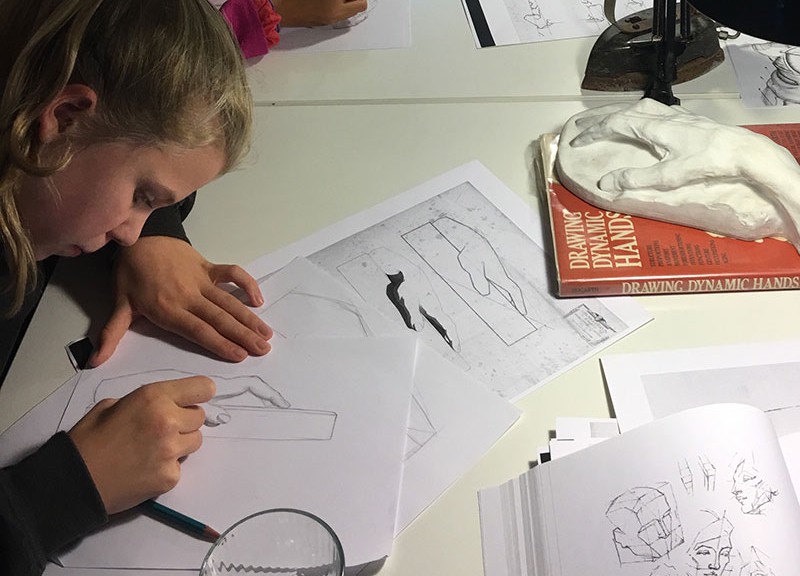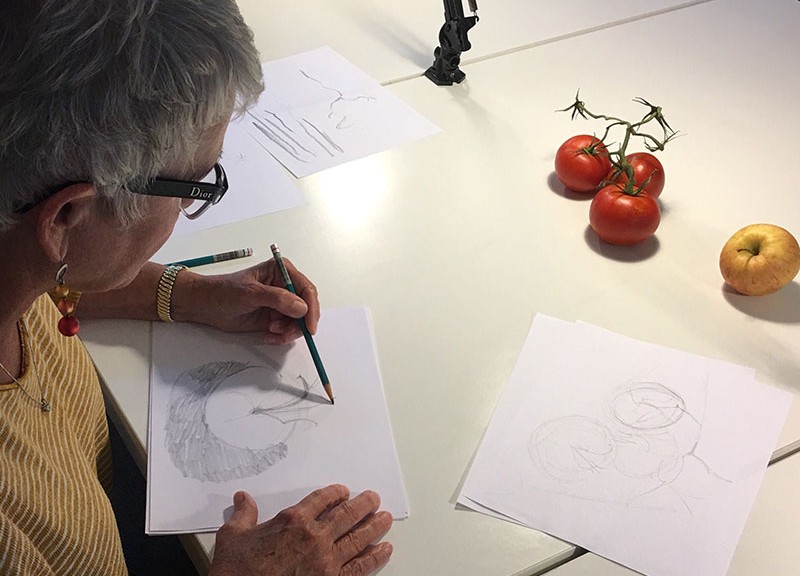
As a kid, I remember squirming with anticipation during the climatic moment of truth in vintage Clint Eastwood westerns. The camera zooms to a closeup of Eastwood's eyes, followed by unbearable tension as the day of reckoning swelters beneath a desert sun. With eyes narrowly focused, the legendary Clint Squint always spelled doom for the …
Continue Reading ›› 
Whether sketching buildings or humans,
Drawing Lab students learn to attack their studies with the same key strategy: Find the basic structure of your subject before going to a finished drawing.

Drawing Lab student, Mike, sent us this sketch while vacationing in Edinburgh, Scotland. …
Continue Reading ›› 
"I can't even draw a straight line!" is a common phrase I hear before beginners start lessons with me. But we soon learn to draw a wide variety of lines, including reasonably straight ones. With practice, even errant and wobbly lines will bend to your command. For students like Dotty, shown above, putting various lines …
Continue Reading ››
Every drawing you do has the potential to suck. Or not.
The fear of making mistakes is what keeps many of us from even trying to draw. However, it is possible to embrace failure and actually enjoy salvaging a drawing from the brink of disaster. Sketching through your mistakes on paper is an important and fun part …
Continue Reading ›› 
The very first thing my students learn is how to hold the pencil on its side while drawing basic lines and shapes. The overhand grip, as it's called in the art world, is a bit awkward at first. But with practice, it quickly becomes second nature to sketchers. One advantage of the overhand grip is …
Continue Reading ››
Drawing For Work, School, Enjoyment


 Drawing Lab student, Mike, sent us this sketch while vacationing in Edinburgh, Scotland. …
Drawing Lab student, Mike, sent us this sketch while vacationing in Edinburgh, Scotland. … 
